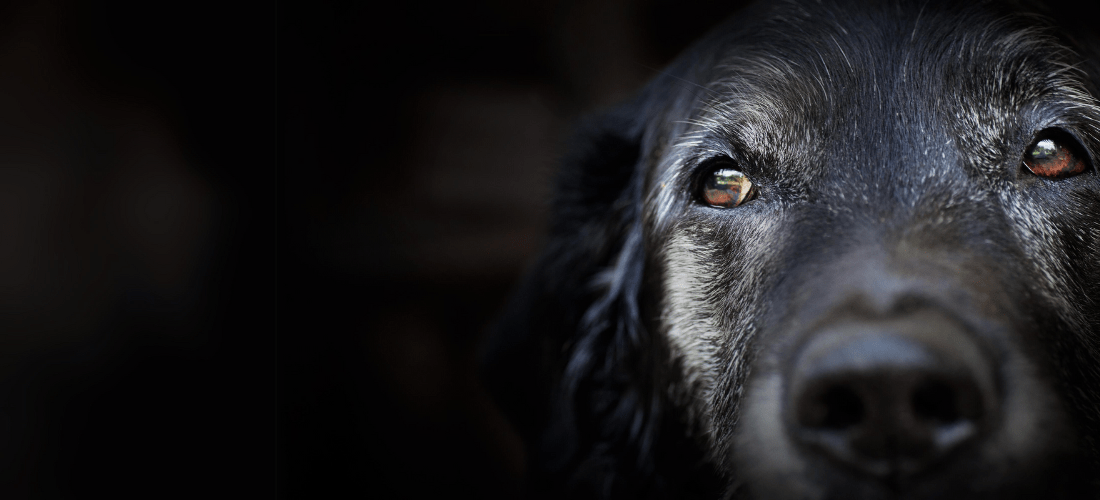Nystagmus (flickering or twitching eye movements) in dogs
Overview
- ‘Nystagmus’ is the word we use to describe flickering or twitching eye movements that your dog is not able to control – their eyes may be moving up and down, side to side or in a circular motion.
- In certain circumstances, flickering eye movements are normal i.e. when your dog is looking out of the car window or when their head is moving from side to side. But your dog’s eyes should not flicker when their head is still.
- Contact your vet straight away if your dog has developed nystagmus.

Nystagmus explained
Nystagmus is the word we use to describe flickering or twitching eye movements – when the eyeballs move in a side to side, up and down, or circular motion. In certain circumstances, flickering eye movements are normal for example when your dog is looking out of the car window or when their head is moving from side to side, but your dog’s eyes should not flicker when their head is still.
Nystagmus is nearly always caused by a problem in the vestibular system which is located in the inner ear and brain. The vestibular system controls your dog’s balance – telling your dog if they are standing up straight, upside down, or falling over. When there is a problem with the vestibular system, this is known as vestibular disease.
Types of nystagmus
There are a few different types of nystagmus (see below).
Horizontal nystagmus
Horizontal nystagmus (side-to-side flickering) is caused by a problem in the ear or brain.
Vertical nystagmus
Vertical nystagmus (up-down flickering) is caused by a problem in the brain.
Rotatory nystagmus
Rotatory nystagmus (circular movements) is caused by a problem in the ear or brain.
Have a look at our video on the different types of nystagmus in dogs:
 Video found at youtu.be/CMlOACXwRZM
Video found at youtu.be/CMlOACXwRZM
Causes of nystagmus
Nystagmus is nearly always caused by vestibular disease. Vestibular disease can be caused by a few different things:
- Old dog vestibular disease – also called idiopathic vestibular disease. This is very common, normally affects older dogs, has no known cause and usually improves quickly
- An ear problem - ear infection, inflammation, a benign growth or a tumour
- A brain problem – infection, inflammation, tumour or stroke
- Trauma - to the ear or head
- Certain medications – some medications are toxic to the ears and have the potential to cause vestibular disease
- Hypothyroidism
- Congenital vestibular disease – puppies born with vestibular disease and deafness
What else to look out for
If your dog develops nystagmus, they may also have other symptoms such as:
- Loss of balance
- Falling over or disorientated
- Head tilt
- Vomiting or reduced appetite
- Walking in circles
- A droopy face
Cost
Depending on the underlying cause, treatment for nystagmus can become expensive, so it’s important to speak openly with your vet about the cost of treatment, your finances, and what you think is right for your dog. There is sometimes more than one treatment option, so if one doesn’t work for you/your pet then your vet may be able to offer another.
Consider insuring your dog as soon as you get them, before any signs of illness start to ensure you have financial support to care for them.
Is nystagmus in dogs painful?
Nystagmus on its own is not painful but is usually associated with nausea, so your dog will likely feel uncomfortable and might be vomiting or have a reduced appetite. Depending on the underlying cause, there may be pain elsewhere for example if your dog has a severe ear infection, this will be painful.
Published: February 2024
Did you find this page useful?
Tell us more
Please note, our vets and nurses are unable to respond to questions via this form. If you are concerned about your pet’s health, please contact your vet directly.
Thank you for your feedback
Want to hear more about PDSA and get pet care tips from our vet experts?
Sign up to our e-newsletter
Written by vets and vet nurses. This advice is for UK pets only. Illustrations by Samantha Elmhurst.

